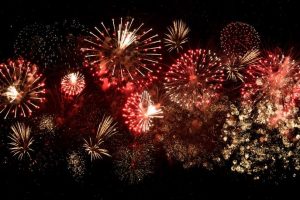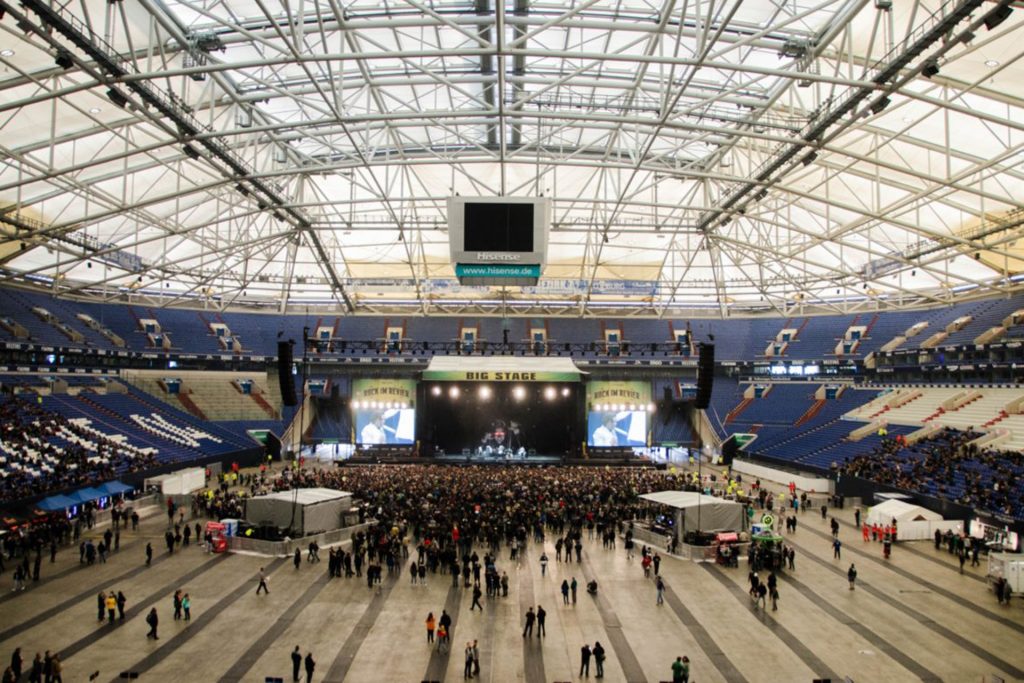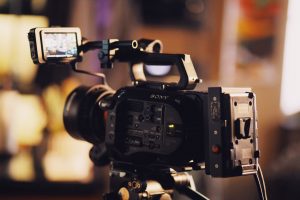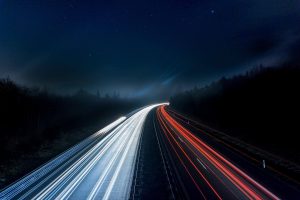This article has already described which planning steps you should take into account before shooting if you want to create an event film. This article is now all about the shooting day itself and the time immediately afterwards. If you pay attention to the following points, you will save yourself a lot of time and trouble in the edit. It will be explained how to film the most beautiful scenes of the event without disturbing the event or the audience. It also describes which mistakes you should avoid at all costs.
If you have little experience as a videographer and have never been able to create an image film or event film, Corona times even offer a special opportunity. Most companies just have a lot of time and resources for such a project. A lot of creative ideas are needed to realize a video within the legal restrictions. If one brings these along, one can extend thus outstanding its portfolio and its network.
On the day of the shooting
If you want to create an event film on your own as a videographer, a few things come together on the shooting day. You have to consider the wishes of the client, the technical aspects and the dymamics of the event. Not everything can be planned. Often you just have to trust your skills and improvise to get the best shots. However, intensive planning should never be omitted. The more points you have thought through in advance, the freer your mind will be on the day of the shoot. This reduces stress and promotes productivity and creativity.
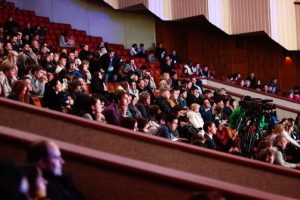
Camera settings: Film event movie in 4k, set frame rate correctly
Immediately after arriving and unpacking, you should make sure that the camera settings are all set correctly. Of course, first: Are the batteries full, is there enough space on the memory card? The resolution should be set to 4k. This gives one much more flexibility in editing. Possible errors can be repaired much better with high-resolution video material. In 4k, for example, it is easier to change the cropped image later. It’s easier to simulate camera zooms and pans without losing quality. Likewise, you can simulate a dynamic handheld camera shot for static shots / tripod shots. Digital image stabilization is also easier to use when shooting in 4k. Post-processing then works best if you film the video in 4k and render it in Full HD. If you want to render the video in 4k, you should film accordingly with an even higher resolution. If the camera can record in 6k or 8k, there are even more editing options.
Which frame rate to set?
Quickly selectable presets for different frame rates should be stored in the camera. This way you can quickly switch between them. It is advisable to film in 24 or 25 fps if you do not want to slow down the filmed material in editing. Certain parts of an event look even better in slow motion. Certain show acts like an artistic performance or a confetti shower, for example. These should be filmed at least in 50 or 60 fps.
If you want to be on the safe side, you can also film continuously in 50 or 60 fps. This keeps the option of a subsequent slowdown open. However, the look of the film changes as a result. Only at 24 or 25 fps does the motion blur occur, that is called cinematic.
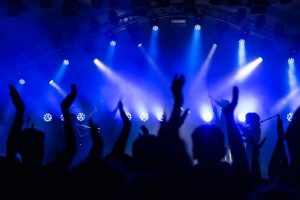
Appear as early as possible
As a camera team, you should arrive at the event as early as possible. This gives you enough time to unpack your equipment, set it up and talk to the organizers. An early arrival contributes significantly to the fact that one can create the event film purposefully, concentrated and with rest. In addition, it makes sense to shoot some introductory scenes (establishing shots) before the event. It is often the case that the daylight situation after the event is no longer suitable for an establishing shot. After a few hours, it is often obvious that the event location is already over. Lights turned off and trash lying around clearly indicate the advanced hour. So the sooner you have filmed and secured the introductory scenes, the better.
The situation is different if the event takes place in the evening or after sunset. Here, of course, it makes sense to shoot the introduction scenes in the evening. Bright sunlight would be rather inappropriate for an introduction scene of an evening event. The time when the guests arrive is always a good time to shoot the introduction scenes. Such images increase the anticipation of the upcoming film. Especially if this is already reflected in the faces of the visitors.
In addition to the introductory establishing shot, you should also think about which scene should be used as the closing scene. For this, you should specifically look for particularly good and suitable motifs. This does not necessarily have to be a scene at the chronological end of the event, but it should symbolize an end. A strong opening and closing scene are particularly important. They contribute greatly to creating an event film that leaves a convincing overall impression.
Create event film: Always have the schedule in view
You should study the schedule of the event carefully. As a camera team, it is essential to always keep in mind when the speeches, performances and presentations that are essential for the film will take place. If possible, it is a good idea to check with the event manager shortly before the start of the event to make sure that the schedule will be maintained. Because it can come again and again to short term cancellations or changes. You must always be prepared for important events at the event in order to have your camera in position. Otherwise you can quickly miss an important moment and an important shot.
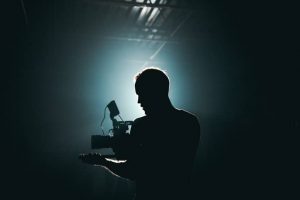
Move and dress like a ninja
During the event, you should move as inconspicuously as possible as a cameraman. It is important not to distract either the people performing or the audience. As a camera team, this happens quickly, as you unintentionally draw attention to yourself. In addition, the footage looks much better if the people being filmed do not notice the camera. Only then they do not look directly into the camera. (Unless, of course, you explicitly want them to).
Therefore, completely black clothing is the best choice for event videography. In your movements, you should be careful not to disturb the event or block anyone’s view. Or just as far as it can be avoided. However, in certain situations, setting up the camera on a tripod in the middle of the audience allows for the best perspective. In this case, you should ask the event manager if there is a suitable place for it. A sufficient safety distance from the spectators should be ensured here.
When setting up a tripod, the positioning of the placement should be safe and vibration-free. And this even when the entire audience is present. Grandstands in a circus ring, for example, can quickly start moving when the audience stands up euphorically and cheers. At concerts with jumping and dancing spectators, this caution should apply even more. When filming with a handheld camera, it is important to keep moving. Especially if you are filming directly in front of the stage or the action. This way you don’t obscure a person’s view for too long.
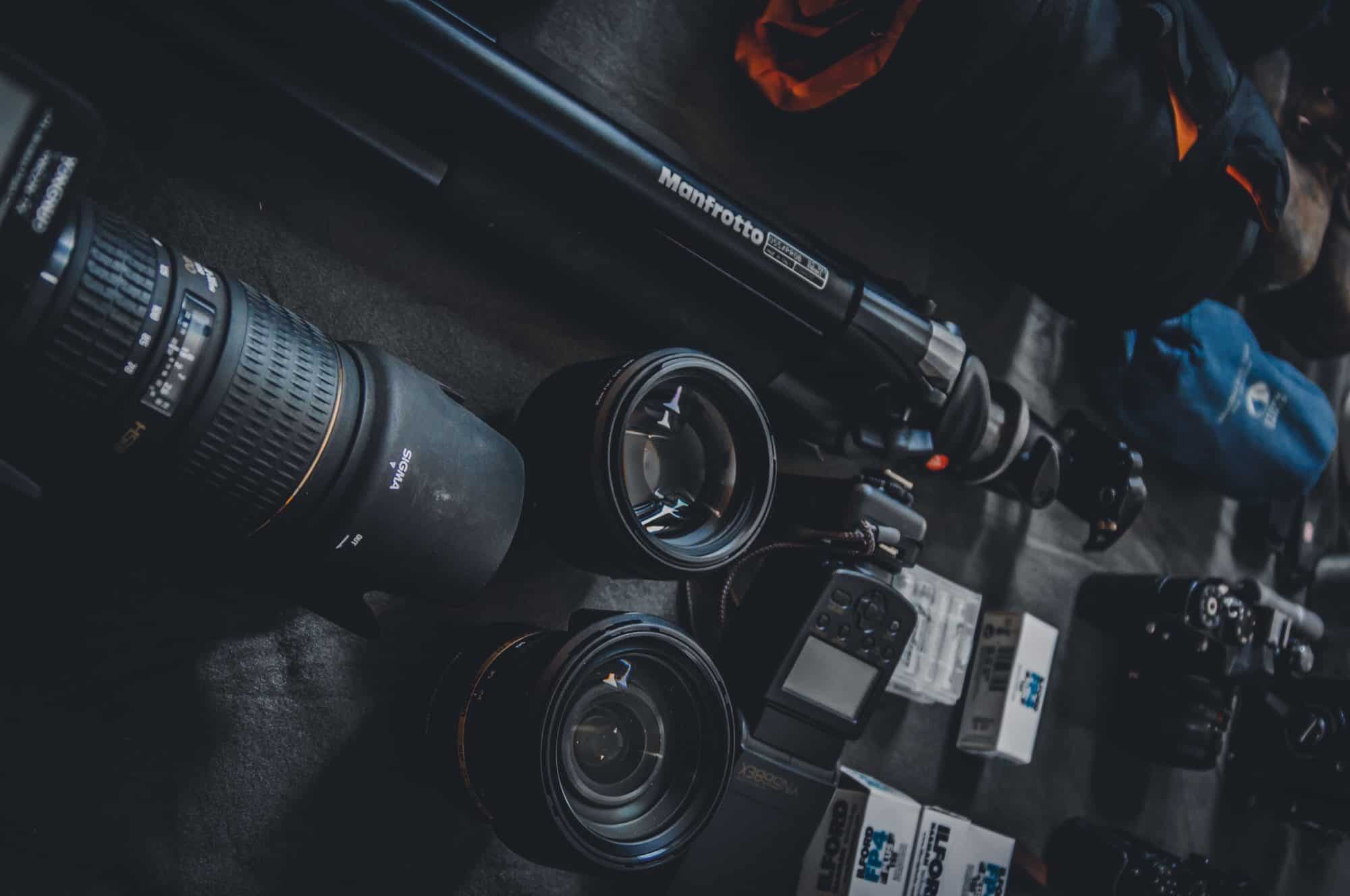
If possible, film (also alone) with several cameras
If you have the possibility, you should always film with at least two different cameras from different perspectives. This gives you enough perspective options for editing. If you are filming the event alone, we recommend using a second camera with a wide-angle lens. This can be placed on a tripod in the room so that a good panoramic view of the event is captured. However, it should be placed in such a way that it can be left unattended safely and with a clear conscience.
If you are filming in a team, you need to clearly agree on who will take which part or perspectives. A typical division would be, for example: A moving camera for the performances or show acts. In addition, a moving camera for the audience and a guided tripod or slider camera for the entire hall. If possible, the cameras should be the same model. The cameras should also be set to the same settings (codec, frame rate, resolution, shutter speed, white balance, color profile).
Making good use of event breaks
Of course, the batteries of all cameras must be 100% charged. It is important to avoid changing the batteries during the event. However, if a battery change is necessary, it is important to plan for the right timing. If in doubt, it is better to change the battery a little earlier during a programmatic break. This way, you don’t run the risk of running out of battery during an important event.
The memory cards should be large enough to record the entire event without changing them. If the camera allows it, you should record on two memory cards in parallel. Nevertheless, you should always carry additional memory cards with you in case a change becomes necessary for any reason. If you have some time to spare (e.g. during a program pause), it doesn’t hurt to take a quick look at the material you have recorded so far. Maybe it will become clearer which shots you need next. It also becomes clear when you have covered certain motifs enough. Of course, this does not replace the shot list or the list of shots to be filmed.

Choose the right lenses
Since many events have changeable and sometimes low light, you should definitely use a lens with good low-light capabilities. In addition, you should make a new white balance in every new light situation and whenever you change the room. For close-up shots of the audience, a telephoto lens is recommended. The shots will be much more natural and reflect the mood more authentically if you film something from a distance instead of standing directly in front of the people. Especially since some people also find it uncomfortable to be filmed up close.
Naturally interacting, laughing people are the salt in the soup for event filming. These reactions are best captured with some distance and better at the beginning of an event. Especially at business events, the initial joy often wears off and the participants get a bit tired or bored. At the beginning of the event, everyone is still full of energy, and you want to convey this energy in the film. Lenses with fixed focal lengths are less suitable when creating event films. With a zoom lens, you’re flexible and can quickly adapt to a variety of situations.
Talking to the guests (if the situation fits)
At some events, it’s natural for all participants to have cameras, at others, not so much. For example, if you’re filming at a birthday or other private party, it’s helpful to talk briefly with many of the visitors. A few nice words about who you are and why or for whom you want to create the event film will lighten the mood and make the event visitors feel more comfortable in front of the camera. Very few people like to be filmed but have no idea what for or what is happening with the footage. If you film without sound (which is the case with B-roll footage), you should tell the visitors directly. That way, they don’t feel like they have to pay extra attention to what they’re saying during the event when the camera is nearby.

The right sound recording
If you want to obtain sound bites from visitors or conduct interviews during the event, you have to think carefully about the acoustic conditions. The louder the environment, the closer you have to get to the interviewee with the microphone to get a good sound. So in noisy environments, it’s not enough to simply plug the microphone onto the camera. In this case, a wireless handheld microphone held at the interviewee’s chest level or a boom pole used to capture what is being said from above is recommended.
The right way to conduct interviews
The interview questions should not be asked by the cameraman, otherwise the interviewee will answer directly into the camera. The interviewer should always stand slightly to the side of the camera. If you still want to ask the questions yourself as the cameraman, you should place the camera on a tripod, position the camera at about eye level with the interviewee, and stand slightly to the side of the camera. If the interviewee is inclined to look into the camera anyway, you can point out to him in a friendly manner that it looks better if he speaks directly to you.
The questions you ask should always be open questions. In other words, questions that cannot be answered with a simple yes or no. The audio should be checked early and regularly. This is because recording good sound at a live event can be much more difficult than capturing the appropriate images. Unexpected glitches in sound recording can occur at any time, so sound recording should be checked extensively before the event and checked again and again during the event.
When connecting a recording device to the sound engineer’s mixing console, you should have a sufficiently long XLR cable with you to place the recorder safely and easily accessible (for intermediate checks). In addition, it is always a good idea to screw a directional microphone onto the camera in order to be able to fall back on an alternative audio track. When using radio microphones, these should be checked in good time for possible sources of interference / interfering frequencies and configured accordingly so that they are free of errors. If the persons to be filmed are wearing costumes, it should be agreed in good time where these costumes offer space for plugging in the microphone and the transmitter. In the case of radio microphones, new, high-quality batteries should be inserted or the rechargeable batteries should be fully charged before each event.
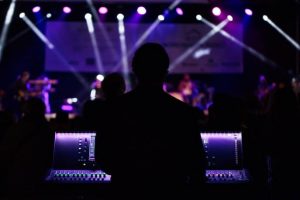
Think ahead and anticipate what will happen
As a cameraman, of course, you can never know exactly how the events on stage will change, which camera perspective and setting will be most suitable next. However, it is important not only to concentrate on the present during the event, but also to always be a bit mentally in the future. By thinking well ahead and anticipating what might happen next, you can capture the strongest images. Many parts of each event are unique and there is no second chance to capture them. By anticipating an upcoming highlight well in advance, you have the best chance of capturing some particularly impressive shots.
Do not film too little, but also not too much
A common beginner’s mistake is to let the camera run continuously, hoping to capture something interesting at some point. This method costs an incredible amount of time in editing, as there is a lot of unusable footage. It also uses up battery power and storage space unnecessarily. It makes more sense to specifically find exciting subjects and film them with targeted, clear movements. It is also important to hold the camera still for a while if it is a good moment. However, it is very important not to stop the recording too early. In the edit, you will regret it if a particularly good moment cannot be used due to a hectic pan to a new subject or an abrupt end to the shot.
Be not only a cameraman, but also a director
As a cameraman, you should film the event as authentically as possible. Nevertheless, there is absolutely nothing to stop you from acting as a kind of director at the event (as long as you don’t disturb the event). If you have seen a particularly nice action, a nice greeting or gesture, a demonstration of a piece of equipment or merchandise, etc., some action that can easily be repeated, you can simply ask the people to repeat it exactly the same way again for the camera.
Filming Insert Shots / Shooting for Editing
In order to better connect the scenes in the edit, insert shots are needed. These can be objects, decorations, small details that you can place harmoniously between two shots that show a little more action / events, and in the immediate aftermath might otherwise seem confusing. Already during the shoot you should think about how to best connect the filmed scenes and directly capture the appropriate intermediate images. This way, you can create your event film much faster in the edit and the customer can enjoy an impressive film sooner.
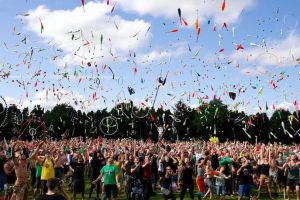
Create and publish an event film: important aspects to keep in mind after the shoot
Check the equipment
With the checklist already mentioned at the beginning, you should check point by point whether you have packed all the equipment you brought with you again for removal. After the event, one is often exhausted and therefore tends to overlook something, so it is recommended to work really strictly with the list. If you have rented equipment on site, you will automatically be reminded to return it.
